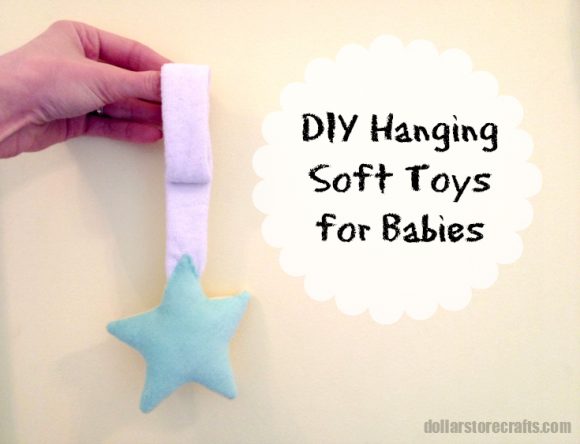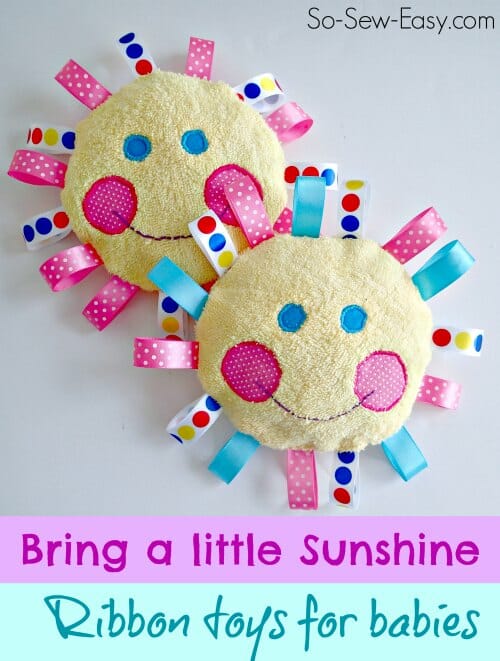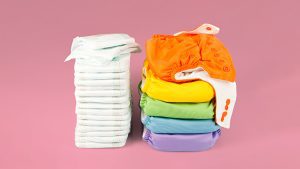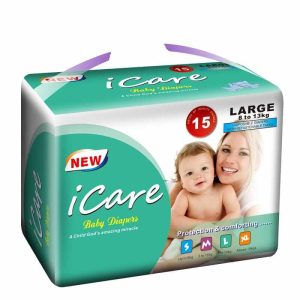How to craft a baby toy, select safe materials and design with simplicity in mind. Ensure the toy is durable and engaging.
Creating a baby toy requires careful consideration of safety, materials, and design. Start by choosing non-toxic, baby-safe materials such as organic cotton, wood, or BPA-free plastic. Simplicity is key—opt for bright colors and basic shapes to capture a baby’s attention.
Ensure all parts are securely attached to prevent choking hazards. Durability is essential, as babies tend to chew and throw toys. Adding sensory elements like soft textures or gentle sounds can enhance the toy’s appeal. Always test the toy for safety before use. Crafting a baby toy can be a rewarding experience, providing joy and stimulation for little ones.
Introduction of How to Craft a Baby Toy
How to craft a baby toy, Creating baby toys at home can be fun and rewarding. DIY baby toys offer personalization, creativity, and a sense of accomplishment. They can also be cost-effective and eco-friendly.
Benefits Of Homemade Toys
Homemade toys come with many benefits. Here are some key advantages:
- Cost-effective: DIY toys often use items you already have.
- Eco-friendly: Reusing materials reduces waste.
- Personalized: Customize toys to suit your baby’s preferences.
- Creativity: Designing toys can be a fun project.
Safety Considerations
Safety is crucial when crafting baby toys. Here are some tips to ensure safety:
- Non-toxic materials: Use only safe and non-toxic items.
- Choking hazards: Avoid small parts that can be swallowed.
- Sturdy construction: Ensure the toy is strong and durable.
- Soft edges: Smooth out any rough or sharp edges.
Always supervise your baby during playtime with DIY toys.
Materials And Tools
How to craft a baby toy, creating a baby toy is a rewarding and fun project. This guide will help you gather the right materials and tools. Ensuring safety and durability is crucial for your handmade toy.
Essential Supplies
How to craft a baby toy, you need some basic supplies. Here is a list of essential items:
- Fabric: Choose soft, durable fabric for the toy’s body.
- Stuffing: Use hypoallergenic stuffing for safety.
- Needle and Thread: Strong, thick thread works best.
- Scissors: Sharp fabric scissors ensure clean cuts.
- Patterns: Use simple patterns for easy sewing.
Choosing Safe Materials
Safety is the top priority when making a baby toy. Here are some tips for choosing safe materials:
- Non-toxic Fabric: Ensure the fabric is free from harmful chemicals.
- Eco-friendly Stuffing: Organic cotton or wool is a good choice.
- Secure Fasteners: Use embroidered eyes instead of plastic ones.
- Washable Materials: Choose materials that can withstand frequent washing.
Tools For How to Craft a Baby Toy
Having the right tools makes the crafting process smoother. Here are some important tools:
| Tool | Purpose |
|---|---|
| Sewing Machine | Speeds up the sewing process. |
| Embroidery Hoop | Helps with detailed stitching. |
| Pins and Clips | Keeps fabric in place while sewing. |
| Measuring Tape | Ensures accurate measurements. |
By using the right materials and tools, you can create a safe and delightful baby toy. Each step you take will ensure your toy is both fun and secure for little ones.
Designing The Toy
Designing a baby toy requires creativity and understanding of child development. It is important to create a toy that is both safe and educational. This guide will help you craft a toy that is perfect for your little one.
Age-appropriate Designs
Creating a toy that matches the baby’s age is crucial. Babies at different stages have different needs and abilities. Here’s a quick guide:
| Age Group | Design Features |
|---|---|
| 0-6 Months | Soft, lightweight, and easy to grasp |
| 6-12 Months | Bright colors and different textures |
| 12-18 Months | Simple puzzles and stacking toys |
Incorporating Learning Elements
Adding educational features to the toy makes playtime more valuable. Here are some ideas:
- Shapes and Colors: Use different shapes and bright colors to stimulate visual learning.
- Sound and Music: Add soft sounds or melodies to engage auditory senses.
- Textures: Incorporate various textures to enhance tactile experiences.
These elements make the toy more than just fun. They turn it into a learning tool that helps your baby grow.
Step-by-step Instructions
Creating a baby toy can be a fun and rewarding project. Follow these step-by-step instructions to craft a safe and engaging toy for your little one.
Cutting And Shaping
Start by gathering your materials. You will need soft fabric, scissors, and a marker.
- Draw the toy shape on the fabric with the marker.
- Use sharp scissors to cut the fabric along the lines.
- Ensure the edges are smooth and even.
Next, cut out any additional shapes needed for the toy. For example, ears or arms.
Assembling Parts
Now, start putting the toy together. You will need a needle and thread.
- Place the cut-out shapes on top of each other, inside out.
- Stitch around the edges, leaving a small opening.
- Turn the toy right-side out through the opening.
Fill the toy with soft stuffing. You can use cotton or polyester fiberfill.
Sew the opening closed with small, tight stitches. Your toy is now assembled!
Adding Finishing Touches
After constructing the main body of your baby toy, it’s time to add those final details that make it special. These finishing touches can transform a simple toy into a delightful keepsake. This section will guide you through painting and decorating your toy and ensuring its durability.
Painting And Decorating
Painting and decorating your toy can bring it to life. Choose non-toxic, child-safe paints. These are safe for babies who might put the toy in their mouth.
- Use bright colors to attract your baby’s attention.
- Apply the paint evenly for a smooth finish.
- Let each coat dry completely before adding another.
Decorating can include adding fun details. You can use markers, stickers, or fabric pieces. Ensure everything is securely attached. This prevents any small parts from becoming a choking hazard.
Ensuring Durability
Ensuring the toy is durable is crucial. Babies can be rough with their toys. Follow these tips to make sure your toy lasts.
- Use sturdy materials like wood or thick fabric.
- Reinforce any seams or joints with extra stitching or glue.
- Test the toy by pulling and twisting it gently.
For wooden toys, apply a clear, non-toxic sealant. This protects the paint and makes the toy easier to clean.
For fabric toys, double-stitch seams for extra strength. Ensure there are no loose threads. These can be a hazard.
| Material | Suggested Action |
|---|---|
| Wood | Use non-toxic sealant |
| Fabric | Double-stitch seams |
| Paint | Choose child-safe, non-toxic options |
By following these steps, you ensure your baby toy is both beautiful and safe. Happy crafting!

Credit: dollarstorecrafts.com
Safety Checks
Ensuring the safety of your handmade baby toys is essential. Babies explore the world by putting things in their mouths. This makes safety checks a top priority. Here are some key areas to focus on.
Choking Hazard Prevention
Small parts pose a choking risk for babies. All pieces of the toy should be large enough. Use a small parts tester to check if parts can fit in a baby’s mouth. Avoid using beads, buttons, or other small items. Securely attach all parts so they cannot be pulled off.
| Check | Action |
|---|---|
| Small parts tester | Ensure no parts fit in the tester |
| Attachment strength | Double-check all parts are securely attached |
Non-toxic Finishes
Babies will chew on their toys. Use only non-toxic materials. Look for finishes labeled as safe for children. Avoid paints and stains with harmful chemicals. Natural oils like coconut oil are great options. Read labels carefully to ensure safety.
- Choose non-toxic paints and finishes
- Use natural oils like coconut oil
- Read labels for safety information
By following these safety checks, you can craft baby toys that are both fun and safe.
Engaging Your Baby
Crafting a baby toy is not just about the end product. Engaging your baby during playtime is crucial for their development. Interaction and sensory stimulation can make playtime both fun and educational. Let’s explore some ideas to keep your baby entertained and engaged.
Interactive Play Ideas
Interactive play can strengthen the bond between you and your baby. Here are some ideas:
- Peek-a-Boo: Use the toy to play peek-a-boo. This game is simple yet engaging.
- Singing Songs: Sing songs while moving the toy. Babies love musical interaction.
- Storytelling: Create short stories involving the toy. Make sure to use expressive voices.
- Imitation Games: Show the toy doing simple actions. Encourage your baby to imitate.
Sensory Stimulation
Sensory stimulation is essential for a baby’s growth. Different textures, sounds, and colors can enhance their sensory experiences. Here’s how you can incorporate sensory elements:
| Sense | Stimulation Idea |
|---|---|
| Touch | Use different fabrics and textures in the toy. |
| Sound | Incorporate bells or crinkly materials for auditory stimulation. |
| Sight | Choose vibrant colors and patterns. Babies are attracted to bright visuals. |
Engaging your baby with these ideas will make playtime enjoyable and beneficial. Remember, interaction and stimulation are key to your baby’s happiness and development.

Credit: so-sew-easy.com

Credit: madebyjoel.com
Frequently Asked Questions
How To Make A Baby Toy At Home?
To make a baby toy at home, use soft fabrics, safe stuffing, and non-toxic materials. Sew securely and add simple features. Ensure no small parts that can be swallowed.
How Do You Make Toys Safe For Babies?
Choose non-toxic materials, avoid small parts, ensure smooth edges, regularly clean toys, and follow age recommendations for safety.
What Is The Easiest Toy To Make?
The easiest toy to make is a paper airplane. It requires just a sheet of paper and simple folding techniques.
How To Create A Multisensory Toy?
To create a multisensory toy, combine various textures, colors, sounds, and scents. Use safe, non-toxic materials. Ensure the toy is age-appropriate and engaging. Incorporate interactive elements like buttons or levers.
Conclusion
Creating a baby toy at home can be a fun and rewarding experience. By following the steps outlined, you ensure safety and creativity. Handmade toys provide a personal touch that store-bought items can’t match. Enjoy the process and watch your little one delight in their unique, custom-made toy.
Happy crafting!




